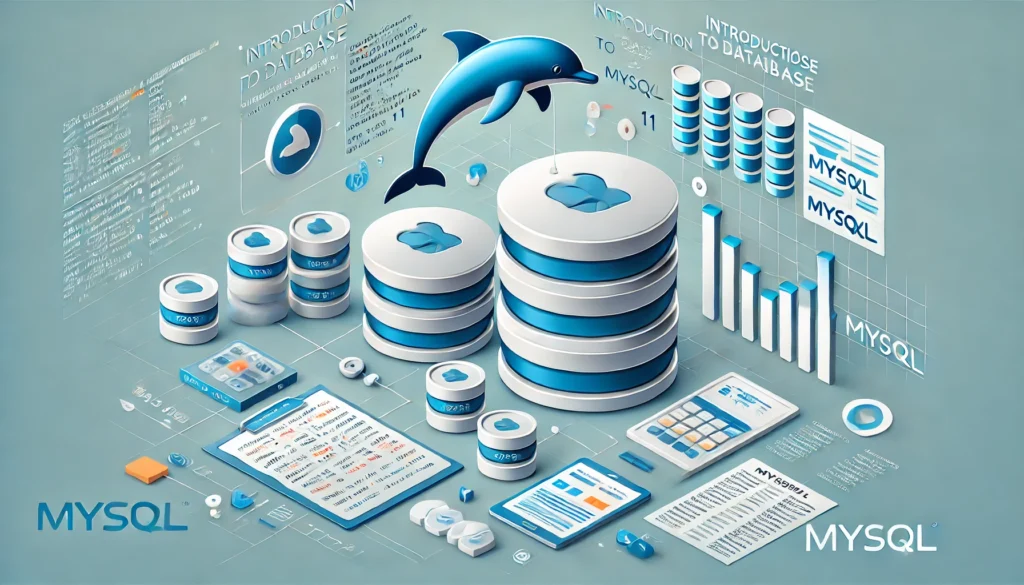Introduction to Database and MySQL for CBSE Class 11

Databases are a crucial part of modern computing, enabling us to store, retrieve, and manage data efficiently. MySQL, a popular database management system, is an excellent tool for working with databases. Let’s explore the basic concepts of databases and MySQL, tailored for CBSE Class 11 students.
What is a Database?
A database is an organized collection of data that can be easily accessed, managed, and updated. Think of it as a digital filing cabinet where data is stored in a structured format.
Key Features of a Database:
- Organized Data: Data is stored in tables, rows, and columns.
- Efficient Retrieval: Databases allow quick and accurate access to the required data.
- Scalability: Databases can grow as the amount of data increases.
- Security: Provides mechanisms to secure data and control access.
Examples of Databases:
- School databases to manage student records.
- Online shopping platforms to manage inventory and customer information.
- Social media platforms to store user data.
Types of Databases
- Relational Databases: Store data in tables (e.g., MySQL, Oracle).
- NoSQL Databases: Focus on flexibility and scalability (e.g., MongoDB).
- Flat File Databases: Simple text files with no complex structure.
- Hierarchical Databases: Organize data in a tree-like structure.
Introduction to MySQL
MySQL is an open-source Relational Database Management System (RDBMS) widely used to manage databases. It uses Structured Query Language (SQL) to perform operations like adding, retrieving, and updating data.
Why Learn MySQL?
- Ease of Use: Simple syntax makes it beginner-friendly.
- Open Source: Free to use for personal and educational purposes.
- Widely Used: Popular in web development and application design.
History of MySQL
MySQL was created in 1995 by Michael Widenius, David Axmark, and Allan Larsson. It was initially developed to handle large databases efficiently and provide a reliable and scalable solution. Over time, it gained immense popularity due to its speed, simplicity, and flexibility. In 2008, MySQL was acquired by Sun Microsystems, which was later acquired by Oracle Corporation in 2010. Today, MySQL remains one of the most widely used database management systems worldwide.
Components of a MySQL Database
- Tables: Store data in rows and columns.
- Fields: Represent the columns in a table.
- Records: Represent the rows in a table.
Basic MySQL Commands
Here are some basic SQL commands to get started:
1. Creating a Database:
CREATE DATABASE School;
This command creates a database named School.
2. Using a Database:
USE School;
This command selects the database for performing operations.
3. Creating a Table:
CREATE TABLE Students (
ID INT PRIMARY KEY,
Name VARCHAR(50),
Age INT,
Class VARCHAR(10)
);
This command creates a table named Students with fields for ID, Name, Age, and Class.
4. Inserting Data:
INSERT INTO Students (ID, Name, Age, Class)
VALUES (1, 'Aarav', 16, '11A');
This command adds a record to the Students table.
5. Retrieving Data:
SELECT * FROM Students;
This command retrieves all records from the Students table.
6. Updating Data:
UPDATE Students
SET Age = 17
WHERE ID = 1;
This command updates the age of the student with ID 1.
7. Deleting Data:
DELETE FROM Students
WHERE ID = 1;
This command deletes the record of the student with ID 1.
Applications of MySQL
MySQL is used in various fields and industries due to its versatility and performance. Some of its key applications include:
- Web Development: Powers websites and applications by managing user data, content, and transactions (e.g., WordPress, Joomla).
- E-commerce: Used in platforms like Magento and Shopify to handle product catalogs, orders, and customer data.
- Data Analytics: Supports businesses in storing and analyzing large datasets.
- Banking and Finance: Helps manage transactional data securely.
- Education: Used in schools and universities to maintain student and staff databases.
Who Uses MySQL?
MySQL is widely used across different sectors by individuals, businesses, and organizations. Some notable users include:
- Tech Companies: Facebook, Twitter, and YouTube use MySQL to handle massive amounts of data.
- Startups: Many startups rely on MySQL for its cost-effectiveness and scalability.
- Educational Institutions: Schools and universities use MySQL for academic and administrative purposes.
- Developers: Both beginners and experienced developers prefer MySQL for creating web and desktop applications.
Advantages of Using MySQL
- Cross-Platform: Runs on various operating systems.
- Performance: Handles large volumes of data efficiently.
- Community Support: Extensive resources and community forums.
Conclusion
Understanding databases and learning MySQL equips you with essential skills for managing and organizing data effectively. Whether it’s for academic purposes or future career opportunities, mastering these concepts will lay a strong foundation for advanced learning. Start practicing with simple commands and gradually explore more advanced features to become proficient.

